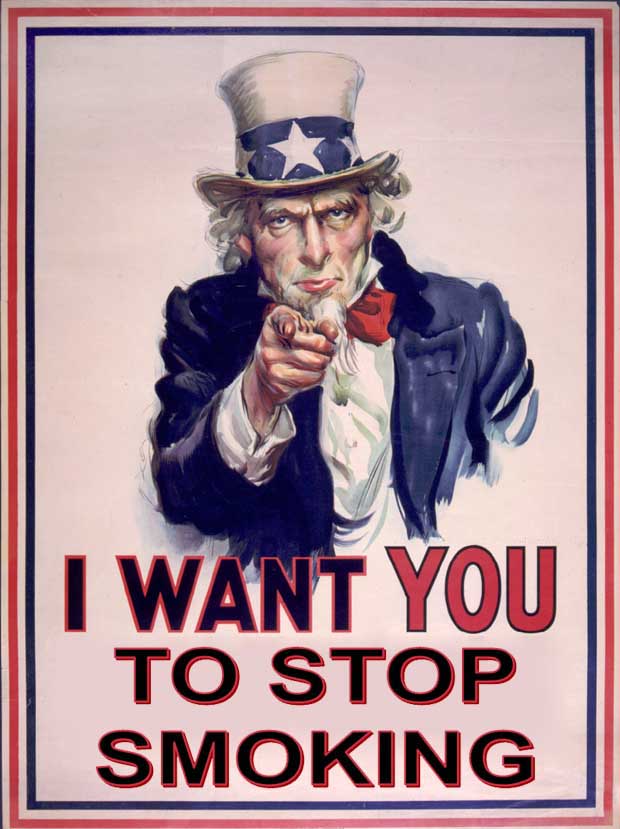- Cigarettes and cigarette smoke contain more than 4,000 harmful ingredients. Many of these cause cancer.
- Smoking and second-hand smoke cause over 430,000 preventable deaths each year.
- Smoking causes more than 230,000 deaths from heart and blood vessel disease each year in the United States.
- Cigarette smoking is a major cause of fire- related deaths.
- Cigarette smoke ruins many aspects of your life - your clothes, your furniture, even your family and social relationships.
- Each day, more than 5,000 children try smoking, and 3,000 become hooked.
- Asthma, bronchitis, and respiratory and ear infections increase in children of smokers. Your children don't deserve to deal with health issues because you are careless with your own health.
- Smoking-related diseases generate more than $50 billion a year in medical costs.


http://patienteducation.upmc.com/Pdf/SmokingFacts.pdf
http://patienteducation.upmc.com/Pdf/SmokingYourHeart.pdf http://www.escapefromcubiclenation.com/photos/uncategorized/doctor.jpg
http://www.csmngt.com/smokers%20lung.jpg
http://images.google.com/imgres?imgurl=http://bp2.blogger.com/_cbnRzVflZuI/RrvC_G3NzaI/AAAAAAAAAT0/nU9zIqrFnJw/s320/smoking%2Bcartoon-2.jpg&imgrefurl=http://lifeinthehealthlane.blogspot.com/2007/08/why-is-smoking-health-issue.html&h=320&w=320&sz=32&hl=en&start=2&um=1&tbnid=D0DFOaOVhiXuyM:&tbnh=118&tbnw=118&prev=/images%3Fq%3Dsmoking%2Bhealth%26um%3D1%26hl%3Den%26safe%3Doff%26sa%3DG
Posted by: Ryan
Credible Communicators (Message #1)


















